Results
-
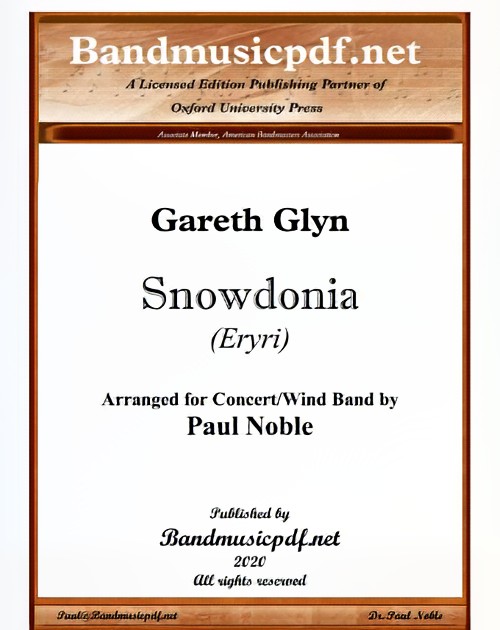 £225.00
£225.00Snowdonia (Concert Band - Score and Parts) - Glyn, Gareth - Noble, Paul
From the composer's home on Anglesey, the magnificent mountain range of Eryri ('abode of the eagles'), known as Snowdonia in English, can be seen clearly, and it is this fine view that spurred him to compose this tone-poem. Just as the mountains change from season to season, and the view alters as one climbs the slopes, there are several distinct and contrasting sections to the piece itself. First we hear the bustle and excitement of the area in summer, as tourists flock to the foot of Snowdon; then an impression of the confident striding of those setting off to climb. After a brisk climax, the codetta to the energetic theme becomes the basis of a new, folk-like, idea which develops into a majestic anthem suggesting the grandeur of the mountain-range. The famous little train of Snowdon is brought to mind by a repetitive, mechanical idea which leads to a section combining both the main themes of excitement and grandeur, and to a powerful climax. Then, after a moment of silence, the atmosphere changes completely. Here is the ineffable solitude - and timeless beauty - of Snowdonia; but from the cellos (saxophone) we soon hear the folk-like theme slowly re-asserting itself, resolving into a peremptory fanfare which leads back to the opening mood and a return of the opening theme. But the final word is given to the 'solitude' motive, now transformed into a resolute chorale representing the eternal permanence of these extraordinary mountains.
Estimated dispatch 7-14 working days
-
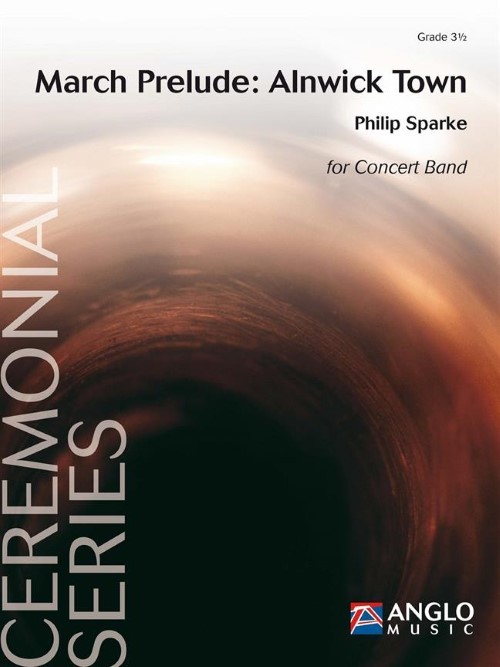 £91.99
£91.99March Prelude: Alnwick Town (Concert Band - Score and Parts) - Sparke, Philip
March Prelude: Alnwick Town was commissioned by the Alnwick Playhouse Concert Band (with Ray Thompson as conductor) to celebrate their first 25 years. It opens majestically with answering phrases between various sections of the band, leading to a faster march-like section, its main theme echoes the rhythms of the opening material. A bridge passage featuring snippets for saxophones and trumpets leads to a new theme, more legato in nature and repeated after a change of key. The bridge passage returns to herald a restatement of the main theme before the opening material reappears to close the work with a flourish.Duration: 3.45
Estimated dispatch 7-14 working days
-
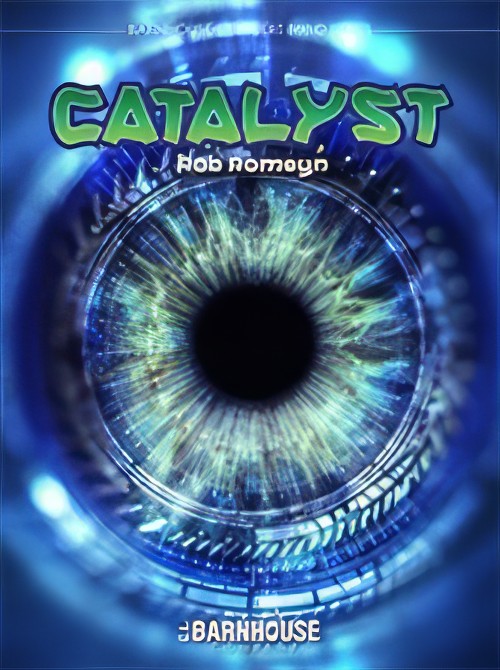 £84.00
£84.00Catalyst (Concert Band - Score and Parts) - Romeyn, Rob
Driving rhythms, contemporary harmonies, stark contrasts, and multi-meter are the "Catalyst" for excitement and intrigue in this epic programmatic work by Rob Romeyn. We begin with an explosion of rhythmic energy and motion. From here, an intriguing melodic theme is introduced amid a lighter texture. As the music develops, this melodic theme is expanded upon rhythmically and through a variety of harmonic variations. A secondary theme enters with a light and almost transparent quality, offering an opportunity to showcase expressive musicality in a mature setting. Further development then ensues, with the music growing ever stronger and stronger, with the emotion practically leaping off of the page. We end with a hair-raising contemporary sounding ending that is sure to have your audience on their feet. Do not miss this outstanding addition to the repertoire for concert or festival use! Duration: 5.30
Estimated dispatch 7-14 working days
-
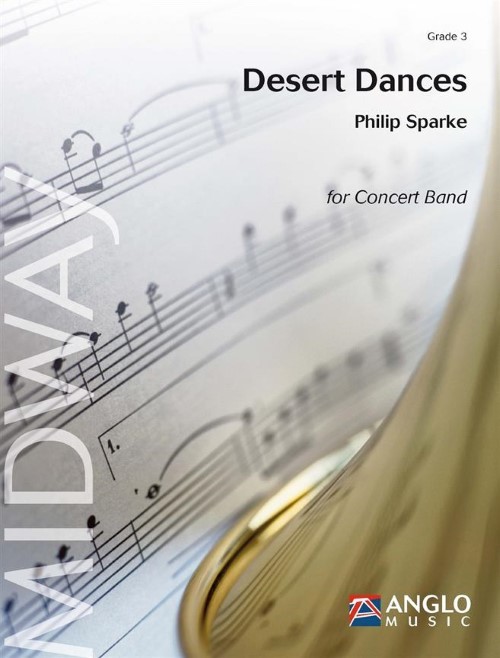 £106.99
£106.99Desert Dances (Concert Band - Score and Parts) - Sparke, Philip
Henderson is a city in Clark County, Nevada, just southeast of Las Vegas and surrounded by desert: this was the inspiration for the title. Desert Dances opens with a lively introduction, mostly in 3/4, which pervades the faster sections of the piece. This subsides to introduce a slower dance which expands to a full-band climax. The introduction soon returns and leads to the main theme of the piece, a waltz-like melody played by the full ensemble. A short bridge passage follows, which leads to a legato central theme. This is played twice and heralds the return of the main theme and a short coda which closes the work. An imaginative work for concert or contest with nice features throughout all groups of the band.Duration: 4.45
Estimated dispatch 7-14 working days
-
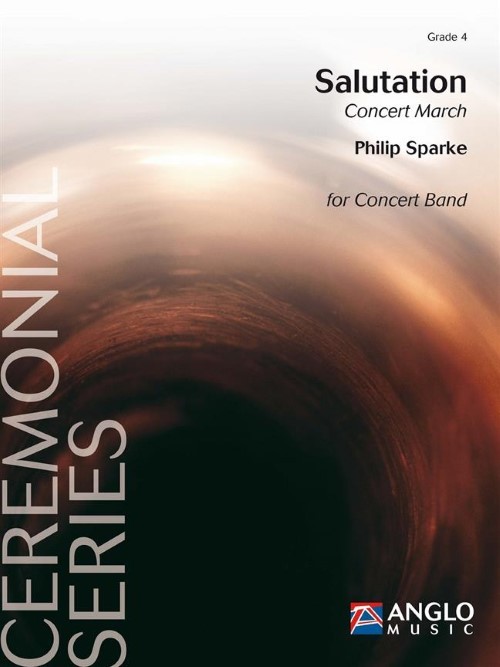 £99.99
£99.99Salutation (Concert Band - Score and Parts) - Sparke, Philip
Salutation was commissioned by Japanese conductor and broadcaster, Yutaka Nishida, a dear friend of the composer Philip Sparke. Salutation follows fairly conventional march form. A short fanfare introduces the main theme, played by clarinets and saxophones. A bridge passage, mainly in the brass, heralds a change of key and a legato second subject, again played initially by the clarinets, which leads to the conventional trio theme, which is then repeated by the full band. Sections of the second subject lead back to the home key and a return of the main theme, embellished with woodwinds.Duration: 4.45
Estimated dispatch 7-14 working days
-
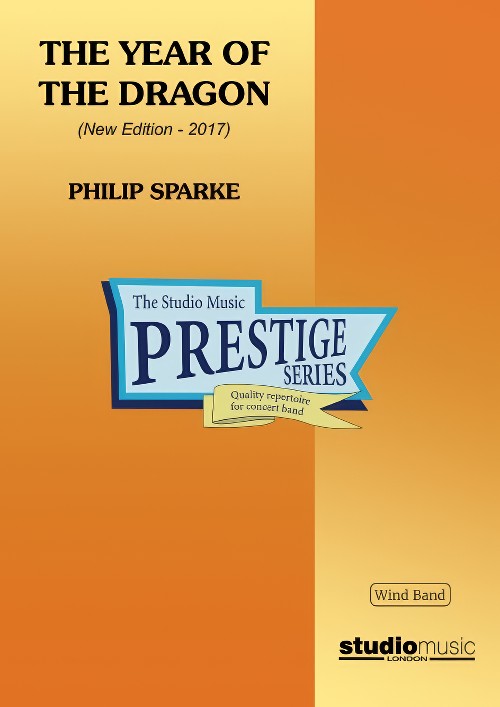 £37.95
£37.95The Year of the Dragon (Prestige Concert Band - Score only) - Sparke, Philip
The 2017 version of The Year of the Dragon was commissioned by the Siena Wind Orchestra and given its world premiere on June 17th 2017 in Bunkyo Civic Hall, Tokyo, conducted by the composer.The original wind band arrangement of The Year of the Dragon was made in 1985, a year after the composer wrote the brass band version. At that time he was still learning the intricacies of writing for wind band (and still is!) and in the 32 years which have elapsed since then, his approach to scoring for the medium has developed and, hopefully, improved.Here are the main differences between the two versions:In the 1980's, the wind band movement was much less international than it is now. British wind bands were still to some extent based on the military band tradition of the time, which tended to use rather smaller instrumentation than the then-dominant American university model. The new version embraces a much more international instrumentation, including low woodwinds and string bass, as well as an expanded percussion section.In the original version there was a touch of naivety in the way the composer wrote for the woodwinds; much of their articulation was transferred too literally from the brass version, resulting in some unidiomatic writing, which he has tried to improve in the new version.In addition to the above, Philip's own compositional style has matured and developed in the intervening 32 years. There are some passages in the original which he simply would not write today - not because they are 'wrong', but because his way of writing has changed. The new version is perhaps how he would have written it today, rather than simply dressing the original version in new clothes.The work is in three movements:Toccata opens with an arresting side drum figure and snatches of themes from various sections of the band, which try to develop until a broad and powerful theme from the middle of the band asserts itself. A central dance-like section soon gives way to the return of this theme, which subsides until faint echoes of the opening material fade to a close.Interlude takes the form of a sad and languid solo for alto saxophone. A chorale for the whole band introduces a brief spell of optimism but the saxophone solo returns to close the movement quietly.Finale is a real tour-de-force for the band with a stream of rapid semi-quavers running throughout the movement. The main theme is heroic and march-like but this is interspersed with lighter, more playful episodes. A distant fanfare to the sound of bells is introduced and this eventually returns to bring the work to a stirring close.
Estimated dispatch 7-14 working days
-
 £199.95
£199.95The Year of the Dragon (Prestige Concert Band - Score and Parts) - Sparke, Philip
The 2017 version of The Year of the Dragon was commissioned by the Siena Wind Orchestra and given its world premiere on June 17th 2017 in Bunkyo Civic Hall, Tokyo, conducted by the composer.The original wind band arrangement of The Year of the Dragon was made in 1985, a year after the composer wrote the brass band version. At that time he was still learning the intricacies of writing for wind band (and still is!) and in the 32 years which have elapsed since then, his approach to scoring for the medium has developed and, hopefully, improved.Here are the main differences between the two versions:In the 1980's, the wind band movement was much less international than it is now. British wind bands were still to some extent based on the military band tradition of the time, which tended to use rather smaller instrumentation than the then-dominant American university model. The new version embraces a much more international instrumentation, including low woodwinds and string bass, as well as an expanded percussion section.In the original version there was a touch of naivety in the way the composer wrote for the woodwinds; much of their articulation was transferred too literally from the brass version, resulting in some unidiomatic writing, which he has tried to improve in the new version.In addition to the above, Philip's own compositional style has matured and developed in the intervening 32 years. There are some passages in the original which he simply would not write today - not because they are 'wrong', but because his way of writing has changed. The new version is perhaps how he would have written it today, rather than simply dressing the original version in new clothes.The work is in three movements:Toccata opens with an arresting side drum figure and snatches of themes from various sections of the band, which try to develop until a broad and powerful theme from the middle of the band asserts itself. A central dance-like section soon gives way to the return of this theme, which subsides until faint echoes of the opening material fade to a close.Interlude takes the form of a sad and languid solo for alto saxophone. A chorale for the whole band introduces a brief spell of optimism but the saxophone solo returns to close the movement quietly.Finale is a real tour-de-force for the band with a stream of rapid semi-quavers running throughout the movement. The main theme is heroic and march-like but this is interspersed with lighter, more playful episodes. A distant fanfare to the sound of bells is introduced and this eventually returns to bring the work to a stirring close.
Estimated dispatch 7-14 working days
-
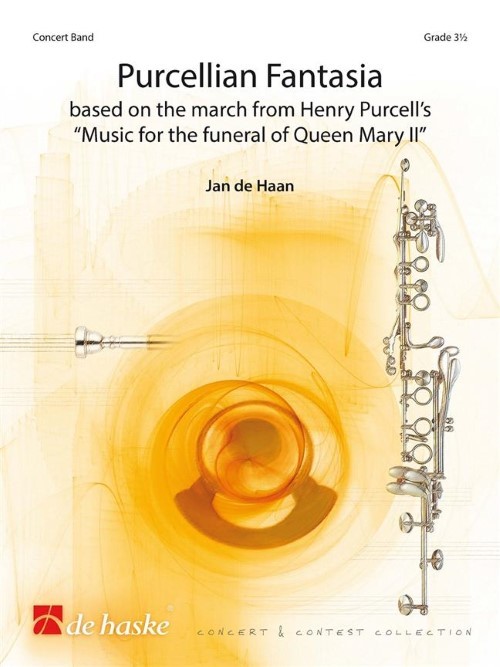 £144.99
£144.99Purcellian Fantasia (Concert Band - Score and Parts) - De Haan, Jan
This composition is based on the march from Henry Purcell's Music for the funeral of Queen Mary II, a work written in 1694. In this fantasia, various movements flow from one to the next following the main theme: these movements not only elaborate on the theme, but also contrast with it. At times, the thematic material diverges so much, that the work acquires a character of its own: however, the composer often refers back to fragments of the theme. Duration: 11.30
Estimated dispatch 7-14 working days
-
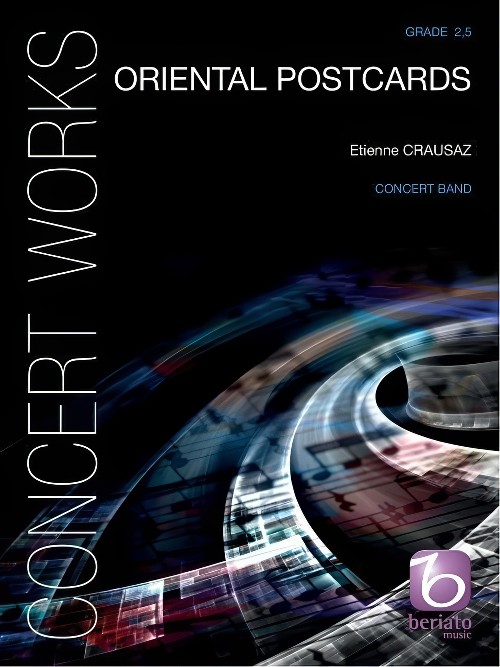 £104.99
£104.99Oriental Postcards (Concert Band - Score and Parts) - Crausaz, Etienne
Oriental Postcards is comprised of three variations on a theme with an Eastern character: in From Egypt, the theme is contrastingly first played in brass and then in woodwind; in From the Desert the drums play an important role; and in From the Orient Express the theme appears in a dun, light-hearted guise. This catchy composition was especially written for young musicians and is especially suitable for youth bands.Duration: 6:40
Estimated dispatch 7-14 working days
-
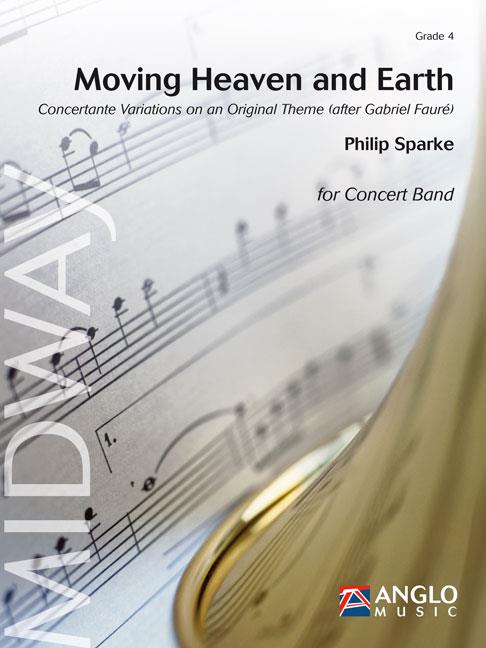 £164.99
£164.99Moving Heaven and Earth (Concert Band - Score and Parts) - Sparke, Philip
Moving Heaven and Earth consists of a theme and 4 variations; although the theme is original it contains a phrase heavily influenced by a 14-bar passage from the Libera Me in Faur's Requiem. It is a sequence that the composer finds harmonically compelling and, although it is never quoted directly, it appears in altered form in the theme and each of the variations. In the original, the passage is set to the words: Quando cli movendi sunt et terra (When the heavens and the earth shall be moved) which gave inspiration for the title.Duration: 10:15
Estimated dispatch 7-14 working days
